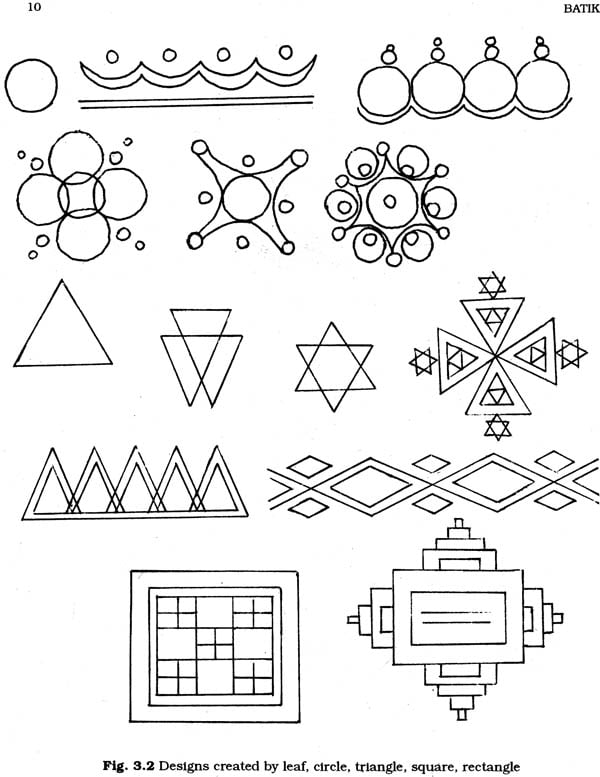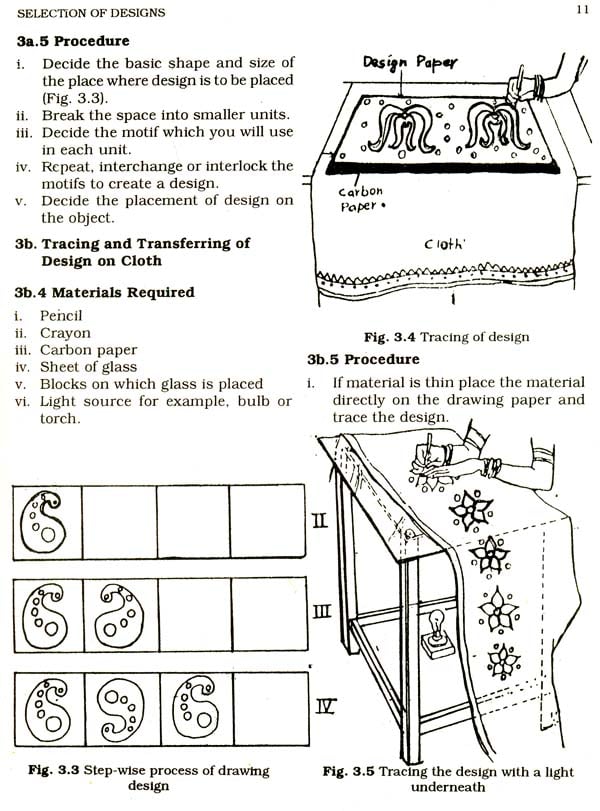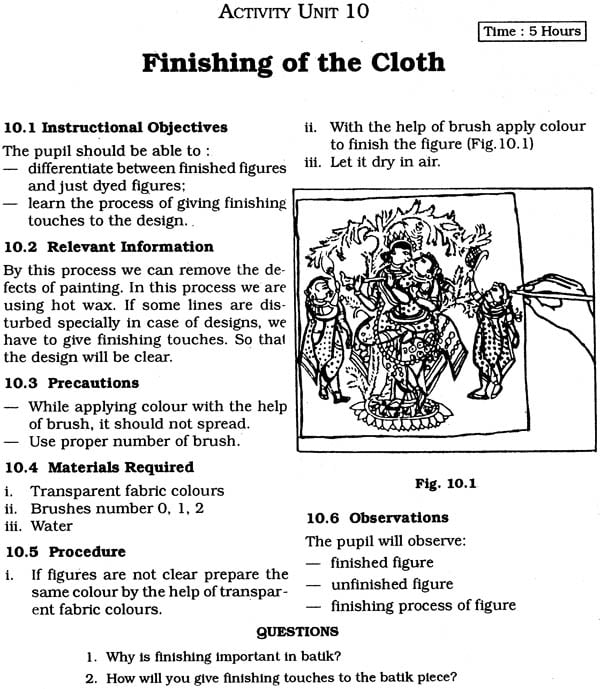
Batik: For Pre-Vocational Courses (Instructional-Cum-Practical Manual)
Book Specification
| Item Code: | NAG859 |
| Author: | Nalini Coordinator |
| Publisher: | National Council of Educational Research and Training |
| Language: | English |
| Edition: | 1998 |
| Pages: | 48 (Throughout B/W Illustrations) |
| Cover: | Paperback |
| Other Details | 9.5 inch X 6.5 inch |
| Weight | 80 gm |
Book Description
Foreword
The programme of vocationalization of higher and lower secondary education has been accepted by the country as it holds great promise for linking education with the productivity and economic development of the country. Pandit Sunderlal Sharma Central Institute of Vocational Education (PSSCIVE) has taken up an innovative project of development of curricula and instructional materials for various vocational and pre-vocational courses on the advice of the Joint Council of Vocational Education.
The present title Batik is a commendable work done by the Institute in meeting the requirements of instructional materials for the students of pre- vocational courses. It has been developed by subject experts and their contributions have been duly acknowledged.
I hope the students and teachers will find the manual useful.
Preface
The National Policy on Education (1986) envisages- that the implementation of a systematic and well-planned vocational education programme is crucial to the proposed educational recognition. Keeping this in view, a variety of vocational programmes and courses have been introduced under the centrally sponsored scheme at the lower secondary, higher secondary and college levels.
The paucity of appropriate instructional materials has been felt as one of the major constraints in the implementation of the vocational education programme at the lower secondary stage. The erstwhile Department of Vocational Education of the National Council of Educational Research and Training (NCERT), which has now become Pandit Sunderlal Sharma Central Institute of Vocational Education (PSSCIVE), has been marking earnest efforts in developing instructional materials on various subjects to fill the gap between the requirement and supply of books.
The present manual on Batik has been developed by the Institute for pre-vocational courses. It also forms a part of handicraft and other related vocational courses being offered in a number of states of the country. It contains activity units to be performed by pupils, with simple steps to follow, precautions to be taken and data to be obtained and processed. It is hoped that the students will find it useful.
The manual has been developed by a group of experts in a workshop held at the Pssclve. I am grateful to them for their invaluable contributions in the development of the manual. I appreciate the efforts put in by Dr Nalini Srivastava as Project Coordinator of the Working Group Meeting and editing the material in the present form.
Suggestions for improvement of the manual are welcome.
Introduction
Batik is the process of creating a pattern or designs on cloth by wax resist technique. Indians used the resist method for printing designs on cotton fabric. long before any other nation. Rice starch mordants and wax were used for printing on fabrics. Indian dyes were the only dyes available that could give bright and fast colours. The traditional Indian technique involved preparation of the design on a wooden block, which was then used to print the fabric with a layer of molten wax or starch paste. The cloth was then dyed in red or blue.
Although batik had its roots in India because reference of resist method are seen as early as the first century AD. While it spread gradually to neighbouring countries like Indonesia, Malaysia, Thailand and Sri Lanka, the interest in batik declined in India.
Indonesians developed this art and encouraged batik strongly. They evolved new designs and improvised methods according to local resources. It achieved an unrivalled degree of craftsmanship in Java where an outstanding technique with use of complicated mechanical devices was used for application of resist. The Javanese women of aristocracy used objects in their natural surroundings such as birds, flowers, fruits, etc. to make elaborate designs on fabrics. Other countries like Malaysia, Thailand and Sri Lanka also made steady progress in batik.
In India the art was revived in the twentieth century due to efforts made by Protima Devi, daughter of Rabindranath Tagore. She introduced the batik as a course in Shanti Niketan. It spread in other parts of the country but still a lot needs to be done. Batik in India can be exploited to a maximum limit with a little more imagination, experimentation and research in new techniques. India has all the necessary raw materials and climatic conditions to do batik. Government intervention is needed to harness the free time of women in villages to provide quality batik.
Batik has attained a worldwide prominence. Batik is a medium which can be tried as a hobby or as an outlet for creativity. The traditional batik was stylised, modern batik has evolved into a individualistic means of expression with unlimited scope.
Now a days batik as a craft has captured the interest of artists, students and housewives. Batik offers something unique and personal as well as aesthetic charm of a handwork as against the mass produced factory products.
Until recently batik process was used to produce dress materials and clothing. But today many artists are experimenting with new techniques and are combining traditional methods with new techniques to produce batik pieces which are livelier and brighter. It has opened new avenues for the use of batik Beautiful murals, wall paintings and household articles are prepared. Batik has an international market which can be explored to its-fullest for the benefit of the people.
Contents
|
| Foreword | iii |
|
| Preface | v |
|
| Acknowledgement | vii |
|
| Introduction | ix |
| | Activity Unit |
|
| 1. | Materials, Tools and Equipment Needed for Batik | 1 |
| 2. | Selection and Treatment of Cloth for Batik | 6 |
| 3. | Selection of Designs | 8 |
| 4. | Preparation of Wax | 13 |
| 5. | Applying Wax by Various Techniques | 15 |
| 6. | Colour and Colour Combinations | 26 |
| 7. | Preparation of Colour Solution | 25 |
| 8. | Dyeing Procedure | 27 |
| 9. | Dewaxing of the Cloth | 29 |
| 10. | Finishing of the Cloth | 32 |
| 11. | Preparation of a Wall Piece by Batik Process | 33 |









